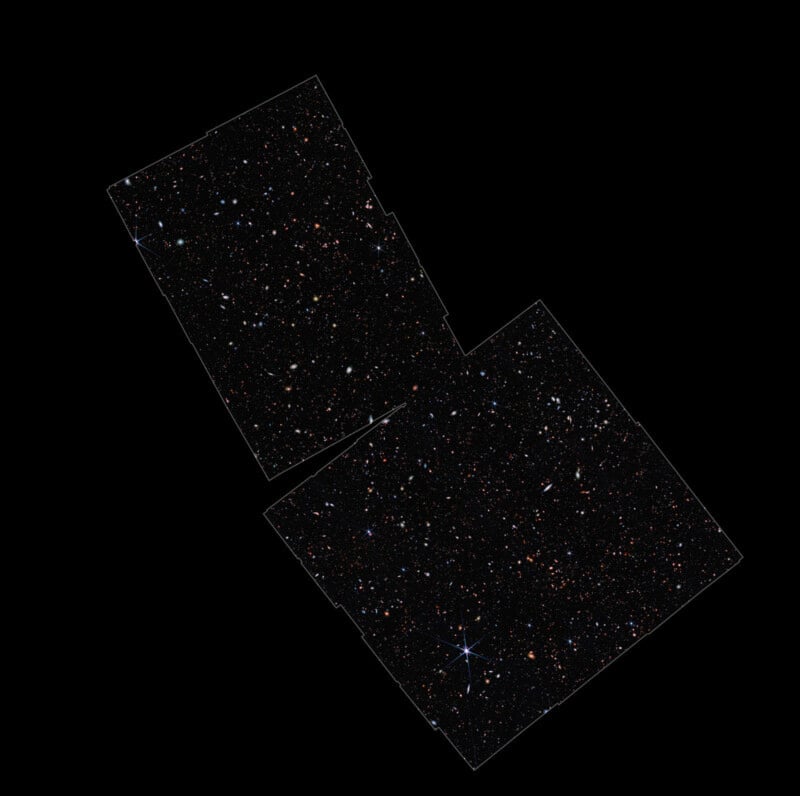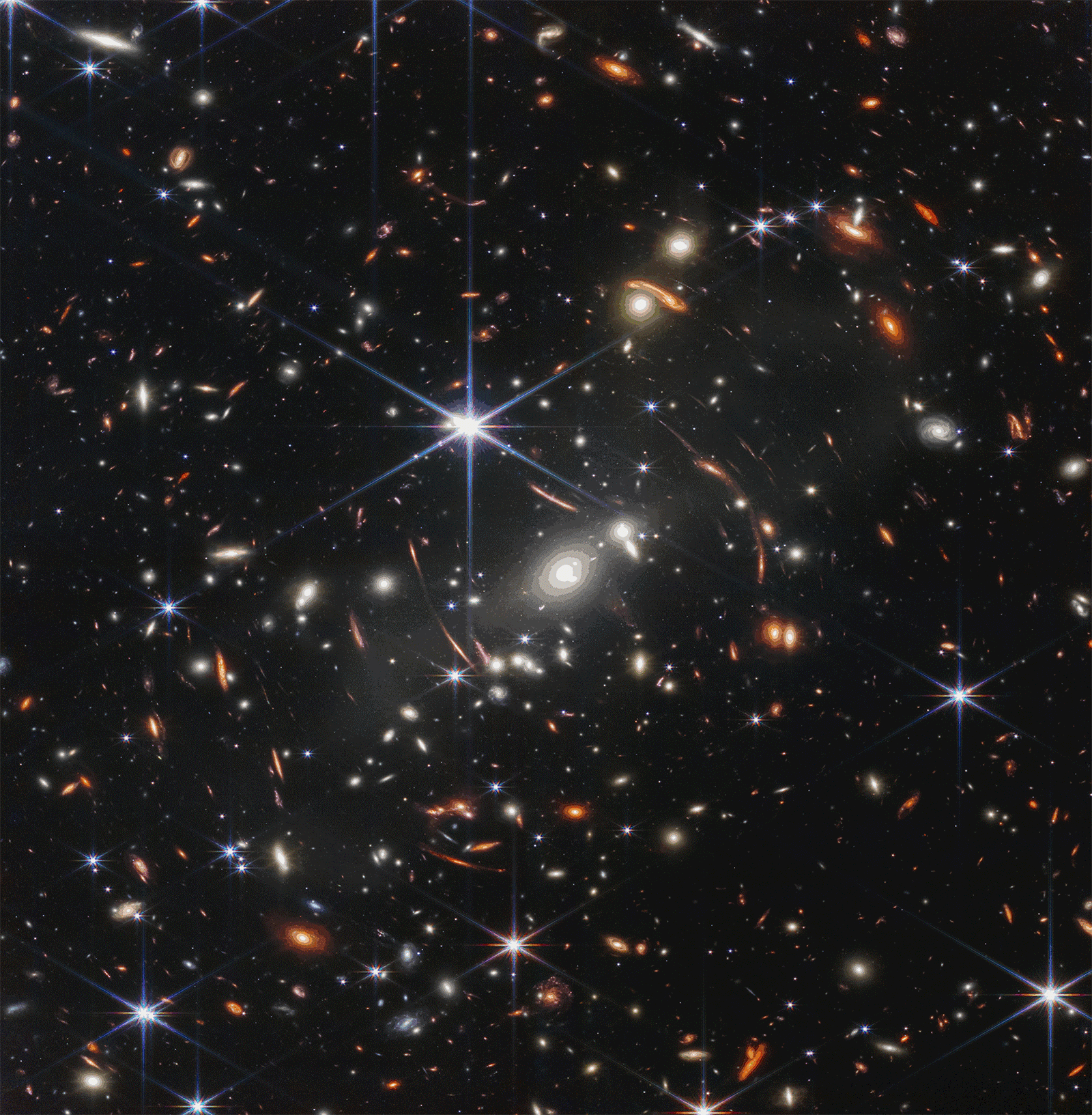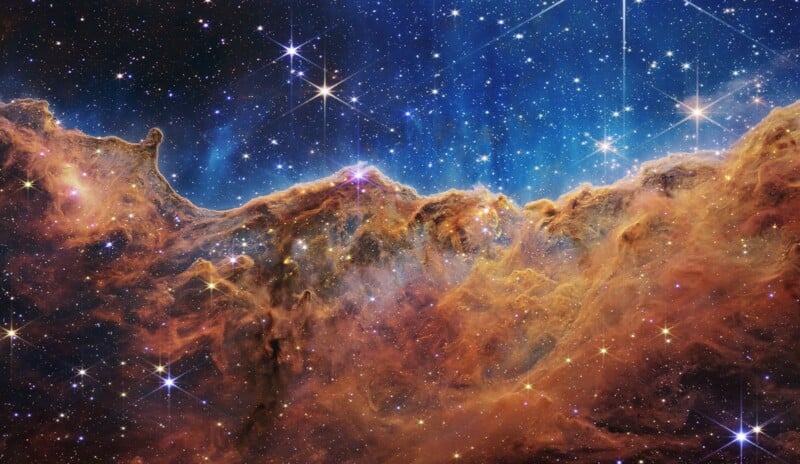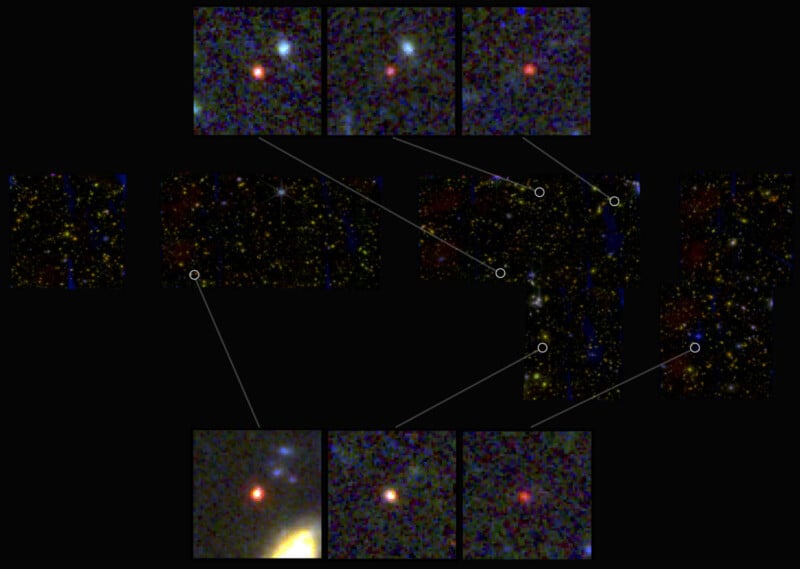’60 Minutes’ Investigates Deep Space and the James Webb Space Telescope
Since NASA shared the first five images from the James Webb Space Telescope last July, astronomers have been busy using the telescope to study the cosmos and uncover new information about the origins of the universe. Scott Pelley took a closer look at Webb and its images in the most recent episode of “60 Minutes.”
“NASA’s James Webb Space Telescope has hardly opened its eyes, and the universe is new. More mysterious, more beautiful than humanity’s dreams,” Pelley says. The largest space telescope ever built, Webb launched into space on Christmas Day in 2021 from Arianespace’s ELA-3 launch complex in French Guiana.
Webb’s journey to the second Lagrange point (L2) took about a month and the $10 billion space telescope is about a million miles (1.5 million kilometers) from Earth. From its orbit around the Sun, Webb can peer back toward “the origin of everything,” Pelley says.
Pelley sat down with astrophysicist Brant Robertson to discuss Webb’s JWST Advanced Deep Extragalactic Survey (JADES) image. Robertson, who works at the University of California Santa Cruz, helps lead the JADES team.
Robertson explains that all the many thousands of dots in the JADES image are galaxies, some of which are larger than the Milky Way Galaxy. The image contains around 130,000 galaxies, half of which had never been seen before.

“We’ve discovered the most distant galaxy in the universe, the one that is the furthest away from us that we currently know about,” Robertson says as he zooms in on a tiny red splotch in the JADES image.
“That galaxy is more than 33 billion light-years away,” Robertson explains. As Webb sees it, the galaxy is only about 320 million years following the Big Bang.
While the distant, ancient galaxy looks like a mere red blob to many, to astronomers, it’s rich with information. Scientists can analyze the galaxy’s spectrum and learn about its star formation, the number of stars in the galaxy, and the typical ages of the stars in the galaxy.
“The heartbeat of this galaxy is racing,” says an excited Robertson.
Pelley then explains Webb’s origins, including an amazing behind-the-scenes look at Webb just before it was folded into a rocket and launched into space in late 2021.

Following Webb’s launch, scientists and engineers went through a labor-intensive process of setting up and testing Webb’s onboard instruments. Even Webb’s test images proved spectacular.
“The whole of the sky was filled with galaxies, there was no empty sky. That’s when I went, ‘This telescope is going to be phenomenal,” says Matt Mountain, who leads Webb’s operations as president of the Association of Universities for Research in Astronomy.
“Every image we’re taking now, we’re seeing galaxies everywhere,” Mountain continues. “It tells us that the universe is filled with galaxies.” Mountain explains that when people look at the night sky, they must now remark that it is full of galaxies rather than stars.
“There is no empty sky with James Webb. That is what we’ve discovered,” Mountain says.
Dan Milisavljevic of Purdue University studies exploded stars and Webb has proven to be a treasure trove for his research.
“Every time there’s a supernova explosion, it’s producing the raw materials for life. The iron in our blood, the calcium in our bones, the oxygen that we breathe, all that is being manufactured in supernova explains,” says Milisavljevic.
“[Webb helps us understand] what’s happening inside the explosion that we couldn’t see because it only comes out in infrared light,” he continues.

Scientists Alyssa Pagan and Joseph DePasquale explain that Webb’s images typically look like a blank screen at first. The beautiful pictures NASA publishes start considerably duller and less colorful until experts like Pagan and DePasquale combine the imaging data at their disposal.
An in-depth article on Webb’s website explains the image processing that scientists perform.
Erica Nelson of the University of Colorado Boulder leads a team that might have used Webb to break the theory on the universe’s origins.

“Either this is wrong, or it’s a huge discovery,” she says. “And we think it’s a huge discovery.”
Nelson is investigating what could be five giant galaxies that appear to have formed “much too quickly” after the Big Bang. If the team confirms their discovery, astronomers will need to revise the timeline of galaxy formation.
The James Webb Space Telescope has already been used for significant scientific discoveries about a year after it began its life in space. It’s impossible to predict what Webb will see next, but there’s no doubt that it will be something incredible.
To catch up on what Webb has seen so far, PetaPixel published a look at Webb’s best images of 2022.